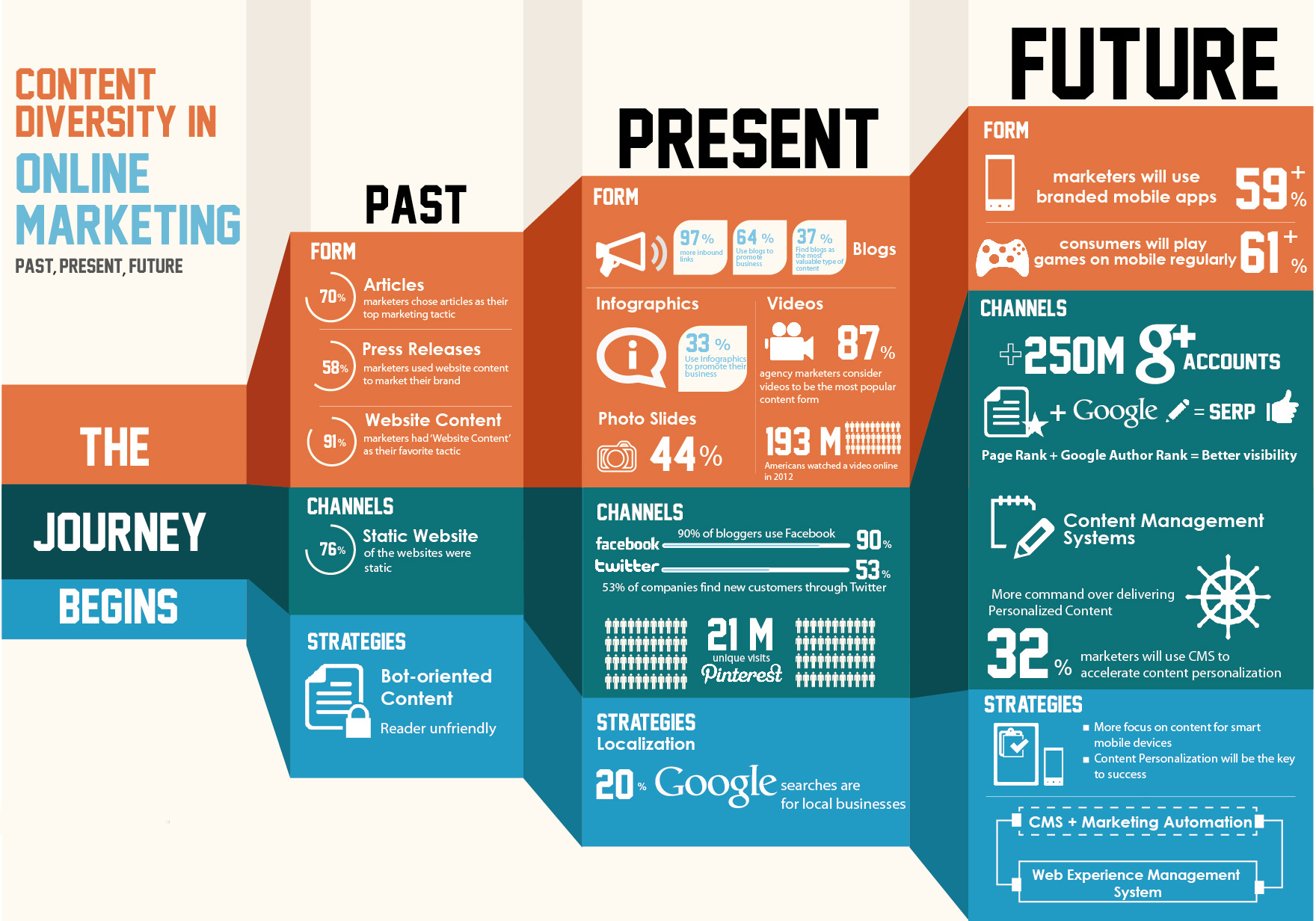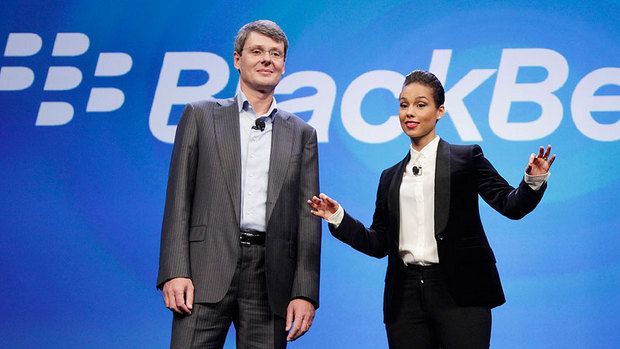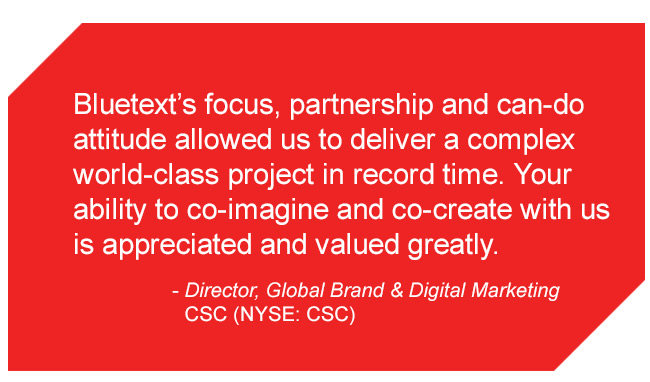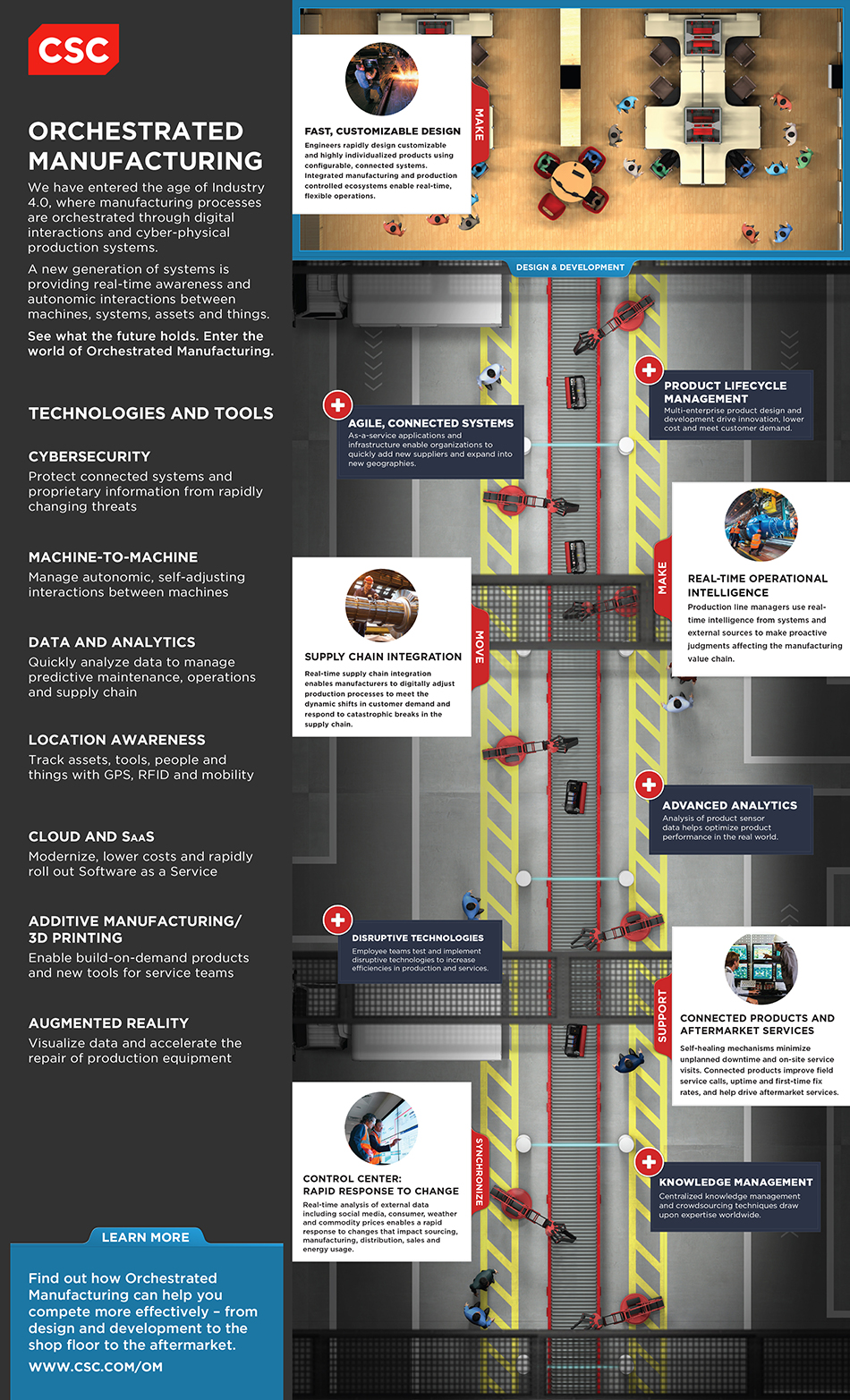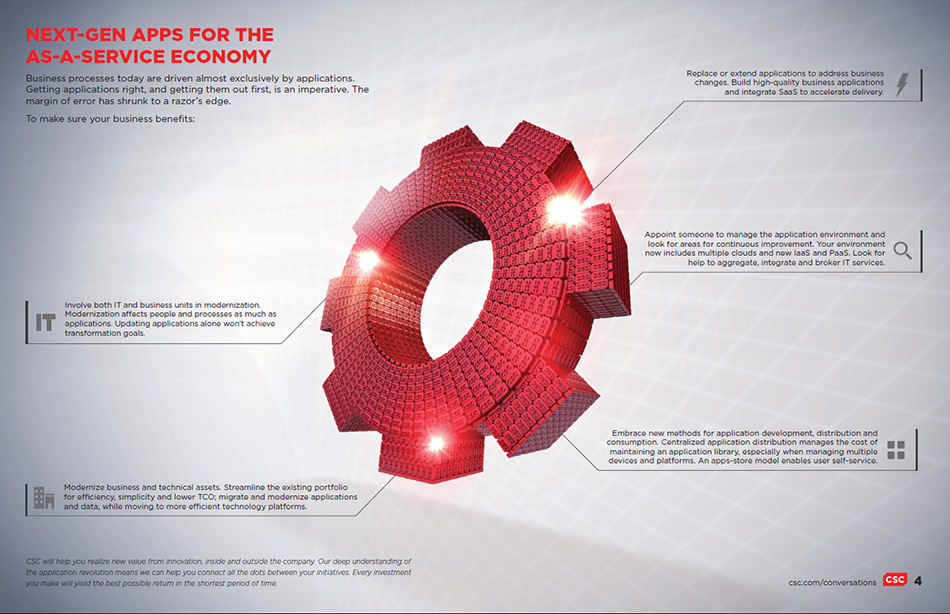Are you planning to integrate or upgrade your content marketing into your online marketing strategy? Not sure where to begin? Here is a basic rundown of how to create an effective content marketing strategy.
1. Establish Your Conceptual Target
An effective content marketing strategy must begin with this first critical step. The goal is typically pursuing new customer opportunities while preserving your core customer base. Understanding who they are, where their interests lie and how to get them to take action and engage with your brand is key to developing your content strategy.
2. Don’t be a One Hit Wonder
As opposed to advertising – which is driven by “The Big Idea” – to stay fresh and engaging, your content marketing strategy needs to offer a variety of premium content on a number of contextually relevant topics When content marketing teams are under resourced, they tend to gravitate back to the big idea and get boxed into a an approach that’s not scalable long term.
3. Use an Editorial Approach
Too many content marketing programs fail in the planning phases of the program because the a long term content strategy has not been fully thought out – so the content being developed using a shoot from the hip approach tends to be more episodic than strategic. The most effective way to avoid failure is to identify specific themes for your content strategy that align with the cyclical business or personal needs of your target audience
4. Be Contextually Relevant
The content you develop must be interesting, engaging and above all else, relevant. Your conceptual target should be able to quickly connect the dots between his challenges and the capabilities you can offer to overcome them – the more contextually relevant your content is to them the easier they will be able to make that connection
5. Process Driven Approach
Since content marketing is still a relatively new approach, a lot of companies are not investing adequate resources or the defined process that planning, managing and publishing an adequate amount content requires. Building a solid content marketing workflow process, and investing in the necessary resources to implement it – whether internal or external – are critical to your success.
6. Collaboration is Key
As with any emerging marketing channel – and social media is a good example of this -there is an internal struggle over which department actually “owns” it. Until that’s figured out, many companies will make it a shared responsibility between their PR, Advertising and Creative departments – passing the content baton from one silo to the next with no clear strategy. If you must borrow the resources, make sure there is a coordinated effort to collaborate as a team on the themes, goals and structure of your content marketing program.
7. Cadence and Consistency
When creating your content strategy, be sure to decide on the frequency of your content marketing so that once your audience is engaged, they stay engaged. Having a consistent and predictable flow of content that your customer can rely on is critical to establishing brand credibility.
8. Use the Right Channels
Instead of hoping your audience stumbles upon you, be sure to publish your content where they already are – in their own environment where they will be more willing to engage. Consider promoting your content on broader social sites like Twitter can make it go viral. If the content is what readers are looking for, they won’t hesitate to share – and that’s the holy grail of content marketing.
9. Leverage SEO
A solid content marketing strategy geared toward the right audience is worthless if it doesn’t reach that audience one way or the other. One of the most effective ways to leverage that content is to employ a strong SEO strategy to incorporate keywords that your customers are using to search for the solutions you are ultimately trying to sell to them
Whether it is a 12-year-old buying a new basketball shoe, a college student looking for a new smartphone, or an IT manager evaluating which cloud CRM tool to purchase on behalf of the company, there is no denying that each can be influenced in the buying decision. Price, design, and features all play a huge part, but consumer and business brands have also recognized, going back centuries, that the right celebrity endorsement can have a disproportionate impact on the buying decision of a large number of individuals.
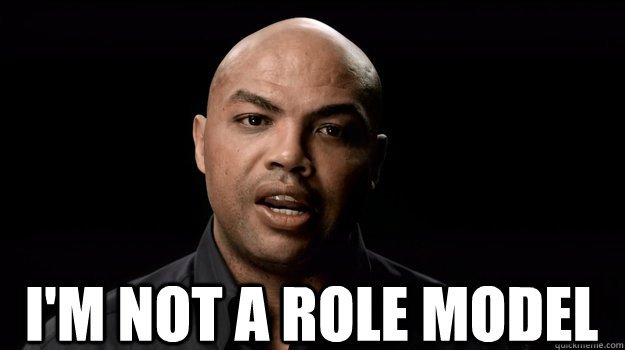
For businesses considering the use of celebrity spokespeople for their brands, it is not as simple as forking over a sack of money to someone famous and expecting a flood of new product/service orders to follow. Success requires a mix of the right chemistry, strategy, and execution.
A brand might turn to a celebrity for a variety of reasons ranging from inspiration to desperation. In the latter category, one might look to when BlackBerry appointed singer-songwriter Alicia Keys “Global Creative Director” a couple of years back. BlackBerry was suffering from a brand perception as a functional device lacking innovation and hoped that Keys, a genuine BlackBerry user/fan, could inject creativity into branding efforts.
While opinions differ on how much a celebrity can impact sales, research published in Marketing Science in the March/April 2013 issue found that the right celebrity endorser could in fact boost sales. Research authors found that from 2000 to 2010, the Nike golf ball division secured an additional profit of $103 million via the acquisition of $9.9 million in sales from Tiger Woods’ endorsement. Through additional sales generated when Woods topped the rankings, Nike recovered 57 percent of the $181 million the company paid Woods between 2000 and 2010 – and that was on just U.S. golf ball sales alone.
Celebrity endorsements can and often do work. To maximize the use of celebrities for brand marketing campaigns, there are a few considerations and strategies to keep in mind:
Analyze the celebrity’s social reach and audience
When partnering with a celebrity for a marketing campaign, your brand should conduct a thorough analysis of the celebrity’s social channels (Twitter, Facebook, Instagram, YouTube, etc.). This analysis must extend beyond simply concluding the celebrity has a large number of followers, and take into account several questions:
- Is the celebrity willing to reach out to his/her followers as part of this campaign? If so, how often?
- Does the general profile of the celebrity’s social audience align with the product or service your brand offers?
- How has the celebrity’s audience reacted in the past to brand endorsements? Receptive? Hostile? Skeptical?
- What is the tone of the celebrity’s past social media communications, and does this tone pose risks based on the current brand mission?
If your brand believes the celebrity’s social media presence needs to play a significant role in the success of the campaign, it is critical to answer these questions before any paid partnership is struck.
Leverage celebrities passionate about your brand
It goes without saying that the overwhelming majority of celebrity endorsements are transactional in nature. In other words, a brand offers to pay a celebrity a certain fee to serve as spokesperson, and the celebrity agrees to that price. Brands should be tuned into how celebrities talk about their brand – whether it is a particular smartphone, food item, airline, or even a conference calling service – and if it finds celebrities organically speaking positively about the brand in a passionate way, a more genuine marketing opportunity is created. It is hard to artificially create “celebrity chemistry” with a brand and/or its product, so when that already exists, audiences will recognize it and the impact can be more tangible.
Don’t fear “odd couple” pairing of brand and celebrity
Chuck Norris’ endorsement of The Total Gym makes sense. So does, for example, a supermodel hawking a skin care product or an NBA player endorsing Gatorade. These endorsements follow a logical path of how we perceive the celebrity’s persona to be (even if that persona is purely based on fictional characters they play) and the brand, product or service.
But sometimes the celebrity marketing campaigns that stand out are the ones where the celebrity’s persona clashes in a humorous or dynamic way with the brand. A few years back, our team worked on a marketing campaign for Identity Guard that leveraged the in your face, brutally honest, comedian Lewis Black. On the surface, having a comedian film a series of Web videos for an identity theft protection and credit monitoring service might seem an odd fit, but it worked because at the time LifeLock was marketing with their CEO spokesperson daring thieves to steal his identity. We took the opposite tact and used Lewis Black’s personality to say NONE OF YOUR D*MN BUSINESS (NOYDB). Who better to say NOYDB than loud comedian Lewis Black?
Don’t get hung up with A-List celebrities and professional athletes
Brands often fear that only A-List celebrities can move the sales needle, but the fact is that these endorsement deals are very expensive and there is no such thing as a sure thing when it comes to the economic impact of a celebrity endorsement. A-List celebrities can come with an entourage of rules, handlers, skepticism and endorsement “baggage,” and the irony is that some celebrities are so over-exposed that when we see them endorsing a product it doesn’t have the desired impact.
Find spokespeople
who embody brand philosophy
Brands often find it challenging to attach a set of values to what is in effect a faceless corporate entity. In these cases, it can be more effective to try and find an individual whose career and experience embodies that philosophy. This approach was used for an advertising campaign, Game Changer, on behalf of leading accounting firm CohnReznick (a Bluetext client). Torre was a strong choice to serve as CohnReznick’s national spokesperson because, as the firm stated, “Joe Torre exemplifies the same characteristics that CohnReznick strives for every day in serving our clients – excellence, integrity, dedication, proven performance, and results-driven leadership.”
In summary, for businesses considering the use of celebrity spokespeople, success requires a mix of the right chemistry, strategy and execution.
Last week we launched a new digital experience for Georgetown University’s McDonough School of Business. The new website, msb.georgetown.edu, gives alumni, global executives, prospective students, master’s candidates, faculty and staff a world-class digital experience. It is specifically designed to show how the McDonough School of Business helps its students succeed in their goals and the institution move up in the highly competitive business school rankings.
Site launches are always an exciting time for the Bluetext team, and McDonough was no different. It’s opening night, the curtain is raised, and the target audience will determine if the strategy, creativity, discipline and hard work have paid off. Shortly after the site launch, we gathered the team to review the project, discuss lessons learned, and identify ways to apply those to current and future projects.
The session was also an opportunity to further refine our core approach to innovative digital experiences to Higher Education as a market. Here are some of the key take-ways:
- Build a strong and sophisticated brand connection. Clean, bold, and straightforward design lets the institution’s brand speak for itself. The design, imagery, headlines and copy should convey confidence. Videos, infographics and interactive functionality can showcase the value proposition and the work of faculty and students.
- Address Return-On-Investment up-front. Students are savvier than ever. They want to understand the value proposition and why the degree at any particular institution is worth the cost. Address the question up-front in a way that students understand, speaking to their concerns and goals.
- Show the “bigger picture.” How will the education experience help students make an impact or shape their world in a positive way? Talk about how their education correlates to what’s relevant today. Depending on the discipline, it could be entrepreneurism, clean energy research, transforming the public education system, or even global citizenship.
- Engagement is essential, just like in the real world. It’s about social engagement and community. Smart use of social tools will put a face on the educational product, faculty and institution.
- Simplify. Put phone numbers and contact information at their fingertips. Clearly describe the admissions process and what they need to know to get started.
- Deliver a coherent digital experience across all touchpoints. Digital audiences are more connected, more empowered, and more distracted than ever before. They are constantly interacting with one or more devices that place data from websites, apps, and social media at their fingertips. Responsive design can give a consistent brand experience across multiple devices. What’s also important, but often neglected, is making sure that content is structured in a way that makes it reusable across desktops, laptops, mobile devices, social media and digital campaigns.
These core principles provide a solid foundation for creating a successful digital experience that drives ROI for any institution. Today, the user experience is about how a broad range of audiences interact with the brand and product across multiple contexts. That requires thinking of the .edu presence as a digital platform, not simply a “website,” to drive enlistment, revenue, and engagement goals.
This is certainly not news, but the amount of information available to target customers continues to grow by the day. Researching issues that might seem obscure and unique means sorting through dozens if not hundreds of options, regardless of how detailed or long-tale the search. The amount of information can be overwhelming, and quickly finding the best answers is becoming a more difficult challenge. This is especially true on the Internet, where chaos and complexity reign. The dilemma is that buyers don’t want to sort through the noise; they want simple choices to complex problems.
Brand simplification is one of the strategies that Bluetext is recommending to our clients as a way to reach customers with a message that resonates amongst the clutter. Paring down the brand to its core values can play across its presentation, its key messages, and even its logo. This is the essence of brand simplification, and it can be an effective approach when refreshing a brand.
People want choices; they just don’t want too many choices. The same is true when it comes to research on the Internet. They enter long-tale searches because short phrases offer too many options. Yet when they visit your site, are they quickly seeing the information that they want and need to engage with your brand, or are they confused about what you are stand for, what you are offering and how you’re different than your competitors?
For more established brands, simplifying the brand presentation to the market can convey both brand value and confidence in their relationship with their customers and a broader audience. We can see how this has played out with logos from Starbucks, Microsoft, and even Pepsi. In each case, the logos have evolved dramatically over time (and in the case of Pepsi, over a long period of time), beginning with a busier mark and moving to a more simplified design that retains many but not all of the original elements.
From logo to messaging to the larger brand presentation, this was the recent challenge facing the Altimeter Group, a successful research, analyst and consulting firm in the digital market based in Silicon Valley. It publishes a wide range of cutting-edge analyses on social media, native advertising and other trends that can help companies better engage consumers, and its team of experts has become a go-to resource for reporters and executives alike. When Altimeter Group wanted to update its brand, it turned to Bluetext. Bluetext designed a new, simplified approach, including how it presents its name, its image and all of its digital and physical assets.
We began with the simple premise that a brand simplification would help Altimeter deliver its core value and message more directly and effectively, and began with a recommendation to adopt Altimeter as a single word. The logo was streamlined with a contemporary design, and the color pallet and typefaces were revised to match.
A significant part of the brand refresh was a new website that engages visitors and provides information in a simplified and more direct approach. Instead of a multitude of confusing navigation options, Bluetext’s design offer three content paths – Our Ideas, Work With Us, and About Us. This approach allows visitors to quickly find the research they are looking for, how to engage Altimeter, and background on its team of experts without having to click through layers of pages. The content is highly search optimized.
Core to this approach is simplification of the way Altimeter tells its brand story, its new look and feel, and the way it engages its audience. When coming to the Altimeter site or seeing its new collateral and reports, there is no question about the story it wants to tell. There are still many content options for visitors to the new website, ranging from a broad selection of research to blog posts and articles from a variety of its experts. The difference is that the process to reach those options is simplified. The Altimeter team is easily found, navigation is reduced to its core elements, and messages are clear and direct. The new brand leverages the position that Altimeter has established, and will help take Altimeter to the next level in the market.
In the early days of search engine optimization Meta Keywords were all the rage. “Keyword stuffing” your Meta header was tactic #1. Unfortunately for today’s markets, those days are long gone.
Since this point of education and correction is reviewed nearly every time we consult clients on search engine optimization, I thought it would be good to write a quick blog outlining two reasons why meta keywords are dead.
1. Google ignores them
About a decade ago, search engines judged pages only on the content of web pages, not on any so-called “off-page” factors such as the links pointing to a web page. In those days, keyword meta tags quickly became an area where someone could stuff often-irrelevant keywords without typical visitors ever seeing those keywords. Because the keyword meta tag was so often abused, many years ago Google began disregarding the keyword meta tag.
2. They alert your competition to which SEO words you are focused on
SEO is a very competitive sport. Source code is publicly available. So if you have a set of keyword research in which you have identified great long tail and short tail keywords, you don’t want to show your competitors what words you are optimizing for. Your competitors can emulate that organic strategy and buy those keywords to one up you on the search engine results pages.
To learn more about the latest SEO strategies and trends please download this white paper or contact me to discuss your SEO goals.
The numbers don’t lie. Traditional advertising, including online banners, print and broadcast, is becoming less effective by the minute. Business consumers know how to tune it out and have all the tools to avoid it. In your buyer’s eye, paid media is practically invisible.
So what is the alternative? First and foremost, it’s delivering content that the buyer wants and needs in order to address their challenges and understand your solution. This is the essence of today’s content marketing. It provides a steady stream of engaging content rather than traditional ads that may be intrusive and not relevant. The primary reason for this is that buyers have shown they are more apt to respond to content that addresses their pain that they opted in for versus the intrusiveness of content that is pushed on them touting a product or service they didn’t request.
Marketing allows marketers to develop a closer bond with buyers by delivering contextually relevant information that makes them more intelligent. In turn, buyers reward them with their business and loyalty. So that begs the question…isn’t it better to “own” the content rather than “rent” the real estate for traditional paid media?
There are dozens of brand studies that show content marketing generates upwards of two-and-a-half times the return on investment for every $1,000 invested in “owned” versus “rented” media. This finding makes sense based on the widely accepted assumption that most B2B buyers have already gone through 70% of their buying journey – having identified their challenge as well as potential solution providers – by the time they are ready to buy.
According to Ad Age’s BtoB Marketing Outlook Survey, 75.1 percent of B2B marketers will invest more in their content campaigns in 2014 than last year. Smart marketers are going to funnel more of their budget toward content creation, forcing them to make hard decisions about where to pull that money from. Advertising is set up to be the fall guy.
Marketers need to pay close attention to these changing dynamics. Advertising will always have a place in marketing budgets, but for the growing number of us that live and die by ROI, having an effective content marketing publishing and distribution strategy will be a top priority in 2015. What’s in your budget?
CSC turned to Bluetext to design and launch an industry-specific landing page around its approach to targeting the requirements of the manufacturing industry. CSC’s vision is called Orchestrated Manufacturing, and it represents an age where manufacturing processes are orchestrated through digital interactions and cyber-physical production systems. CSC is working with clients to implement advanced solutions that leverage a new generation of systems is providing real-time awareness and autonomic interactions between machines, systems, assets and things.
Bluetext worked with CSC’s digital brand marketing team, as well as their Manufacturing industry marketing team, to design a landing page unlike anything CSC has ever launched inside of its corporate domain. It includes a modern design with one long, scrolling page to showcase the vision and its practical application to the market, and then lead visitors to download key content and interact with CSC.
At Bluetext, we find that many large companies with diverse industry focuses and solution offerings sometimes make it hard for target audiences to find exactly what they are looking for. The idea behind Orchestrated Manufacturing is for CSC to tell its story in a unique way with an online and offline strategy to drive a consistent visual message into the market. The landing page is complemented with two videos that can be used by sales teams to succinctly tell the story, as well as a highly produced poster for sharing at events.
Please check it out at www.csc.com/om. We would love to hear about how you are designing landing pages targeting unique audience groups and what strategies you are finding work best.
We asked 150 top government executives who are involved in the decision-making process for IT purchases, both as decision makers and as individuals who have input into decisions, how they get information to help inform IT decisions.
Communicating Your Brand Position
When it comes to learning about new IT services, solutions and products, 44 percent report having previously worked with a contractor or hearing good things about that contractor from others as most important. But nearly the same number of those respondents—39 percent– find that vendor websites are important. Following closely behind are technology trade publications (38 percent). Further down the lists are trade shows (25 percent), webinars (23 Percent) and social media (21 percent).
What this means is that a marketing organization that targets the government market needs to have to a well-thought out mix of marketing activities that includes:
- Messaging to make sure that decision-makers understand your value proposition;
- A dedicated website or landing page that targets this market; and
- A thought leadership campaign that gets visibility in key trade publications.
Trade shows, webinars and social media need to play a part in that mix, proportional to their importance, leveraged strategically to reach the part of the audience that does rely on these tactics.
What Channels do Decision-Makers Use
Government IT decision makers want information on products and solutions, and they want to be able to find it easily and targeted to them. In our survey, 43 percent found most useful an information website on that solution, and 30 percent said that specific digital campaigns were effective for them. Less useful are radio spots (16 percent) and banner ads (13 percent).
Our takeaway is that this target audience is happy to go to your website and engage with your digital campaigns if they are providing the needed information to evaluate their IT challenges. What’s important is having a website, landing page or digital campaign that does speak to their mission needs and isn”t hidden behind When the blood circulates to the soles, and the skin draws the toxins from the blood to the outer layer, the Foot Pad can absorb eliminated toxins released from the acupuncture points. a larger, commercial-markets focused site.
Premium Content Has Great Value
We asked how likely these decision-makers would be to download information to learn about new IT services, solutions and products. Forty-three percent said they would download a white paper or case study, while an additional 33 percent said the same for an infographic and 31 percent for other premium content.
Good content is in demand, and when you bring these target audiences to your website or digital campaign, it is important to have more in-depth information to generate leads and create engagement. A well-designed white paper or case study that hits their mission challenges and is thoughtful and accessible is valued by this audience. So will an infographic that helps tell the story or other types of premium content, including a well-produced video or presentation via SlideShare.
The lesson from this research is not that one strategy is favored over another. Resources need to be allocated through a blend of activities that map to how these audiences prefer to get the information they need. At Bluetext, we believe that a successful marketing campaign for the government customer includes a blend of tactics that work together in context to deliver a powerful, consistent message on a consistent basis.
In an effort to rally its thousands of sales and customer facing teams at its Global Sales Conference in Dallas in April 2014, CSC turned to Bluetext to conceptualize and deliver a brand launch video and interactive experience around the key technology conversations that the company is focused on for the year ahead. The concepts of partnership and innovation, based on CSC’s decades of experience, came to life in an effort to position the company for the next wave of technology trends facing enterprises across the globe.
Bluetext built a storyboard concept around the “Road to Next-Gen IT”, and designed animated illustrations weaved throughout the video to most effectively tell the story. Now Bluetext is working on a virtual briefing center where CSC’s clients and entire ecosystem can come to learn more about these key technology conversations, set to launch in the next few months.
“Your focus, partnership and can-do attitude allowed us to deliver a complex world-class project in record time. Your ability to co-imagine and co-create with us is appreciated and valued greatly.”
Director of Global Brand & Digital Marketing
CSC
There probably isn’t a week that goes by when you don’t come across – on television or radio, in print, online or via social media – a research survey on a consumer or business topic. What factors lead a survey to pique the interest of reporters, analysts and social media influencers? Why do some surveys resonate with everyday consumers or workers, while others flounder and quickly fade into obscurity?
Surveys are conducted not just to generate external attention, but also to guide internal decision-making. To ensure your research survey is constructed, managed and communicated most effectively, below are 9 strategies to consider.
Ensure survey is not duplicative
Surveys are an effective tool to gain market intelligence and generate attention from key press outlets and influencers. As such, it is very likely that competitors and others in your space have conducted research that touches on similar themes. If you are building a survey designed for external consumption, scan competitor news sections to see surveys they have released, and conduct more expansive searches on anything that might resemble your survey.
If others have touched on your survey theme, it doesn’t mean you need to avoid it. Instead, develop angles not previously covered and, most importantly, understand when competitors put out annual surveys so you are not conflicting with that timing. If two surveys come out that are similar in theme but have different results, reporters will question the viability of both and may choose to avoid covering the data altogether.
Aim for contrarian results
Surveys that tend to be widely reported and viral are ones where the results buck conventional wisdom. The satirical publication The Onion once ran the headline, “Poll finds majority of Americans have never met William Dafoe.” The faux poll headline pokes fun at real surveys that come up with unsurprising results. And while this is headline news for The Onion, predictable survey outcomes are a death knell for generating survey coverage.
Generate questions that you believe might lead to unexpected answers, because results that counter expectations will prove most interesting to the market because you are telling them something they don’t know, not simply reinforcing their previously held assumptions.
Ensure data will have external and internal value
From time to time, I’m brought into a survey process near completion, and find that many of the questions have been designed for the company to gain useful intelligence for internal purposes. This could be research for a pending product launch or a company pushing into a new market. Often, the questions are suitable for internal intelligence, but rather useless for externalizing the data. This is due to the fact that the questions don’t follow a cohesive theme and are too scattered to assemble into a strong media story, lack the necessary filtering to break up results in a meaningful way, or lead to answers that are just plain boring. This is a wasted opportunity; research surveys are not cheap, and that means you want to squeeze every possible ounce of internal and external value out of it. You can’t go back and add something after the survey is complete, so take the time to think about questions and answers that can serve multiple objectives from day one.
Use surveys to support product/service launches
Contrarian and compelling results are great, but if they undermine business objectives the survey is rendered useless. For example, let’s say your company is in the process of developing or launching a new Cloud-based mobile videoconferencing solution for small businesses and want to conduct a survey showing that the small business market is demanding this type of product. Be sure to have enough knowledge of the market to surmise whether it is ready for the solution, because if survey results come back and are underwhelming, you will likely not want to externalize that data.
A better way to approach this scenario is to flip the questions and focus on what this market is looking for in a mobile videoconferencing solution from a price, features, and functionality perspective. This strategy not only generates less threatening results, but also provides valuable intelligence to ensure your product matches what the market is looking for.
For survey questions, KISS (Keep it simple, stupid)
A key objective of a survey is to generate deep, meaningful results. That said, the more complex the Q&A, the more difficult it can be to communicate survey results to the media. For example, let’s say you ask the following question: “One-third of executives who have been in their position more than five years have strong compliance measures in place.” These results are a tough sell because they introduce multiple data points and filtering into a single response, and it is unclear if this filtering even has any added significance. Develop questions that will generate clean, easy to consume data points that a reporter, analyst, business decision maker or the lay consumer can relate to.
Make data more ‘consumable’ with infographics
While there will always be an audience receptive to deep, granular survey data, most individuals do not have the time or wherewithal to sift through pages of text and numbers – no matter how compelling the results are. Instead, marketers are seeing better traction when the data is presented through engaging, visual infographics. Images and videos are used ‘tell a story’ through the data that can be consumed quickly and easily. Infographics also allow organizations to imprint their brand look and feel with the data, and direct audiences visually to data points that you feel are most significant or beneficial to broader story.
Go one step further with ‘snackable’ graphics
In the era of social media, even some larger visuals are not optimal for the condensed content formats of Twitter, Facebook, LinkedIn and Vine. To ensure that survey data can be easily communicated via social channels, create ‘snackable’ or ‘bite-sized’ graphics that are scaled down to a more shareable format. These graphics are sized to remove the extra step for consumers of the graphic to have to click on a lick or navigate to the full-sized graphic.
Use survey results to anchor thought leadership
Sure, many organizations conducting a survey might build a white paper or report around the date and put out a press release, but this leaves several other opportunities on the table. Don’t be the organization that spends $50,000 on a survey, has the results come in, and only then asks what they are going to do with the data.
If the results tell a strong story, extend the life of the results by building content around the data, such as byline articles that can be placed in target publications, webinars, conference speaker entries, and slideshare.
Create a home for your survey
Depending on budget and ultimate objectives, there is value in creating a digital home for your survey to live at for an indefinite period of time. If the survey is unique enough in nature, it is not uncommon for the data to be cited by press, analysts, and even other companies for weeks and months after the survey is released. If organic search leads individuals to a landing page that is dynamically updated with complementary and current information – rather than routing searchers to a dated, static press release – the benefits of the survey can have a long shelf life.
This digital home can include other types of content referenced in this column, such as infographics, white papers, byline articles and videos that support the data or relate to it.
– See more at: http://www.agencypost.com/9-pr-and-digital-marketing-strategies-to-promote-a-marketing-survey/#sthash.E4HMxGxi.dpuf
